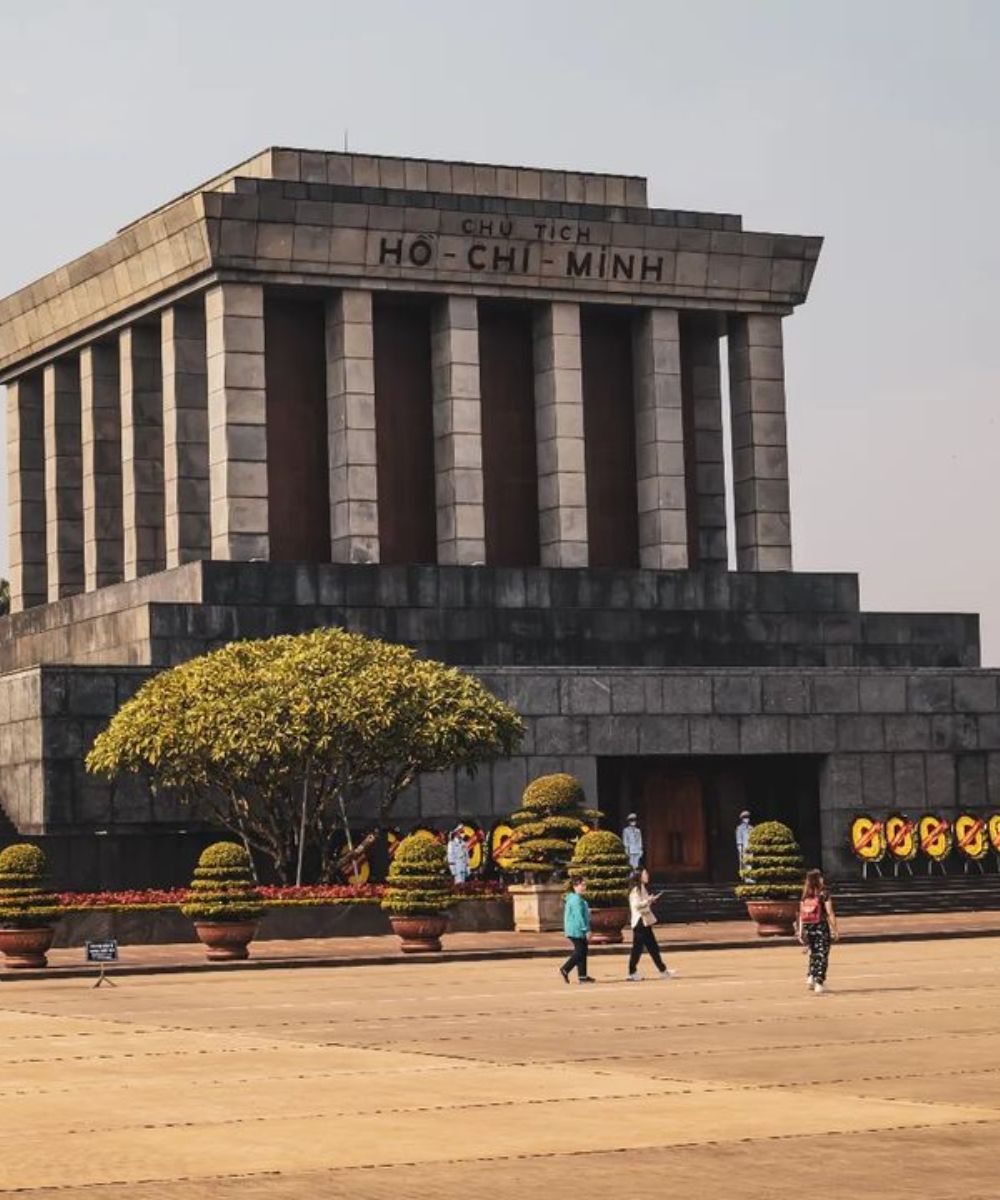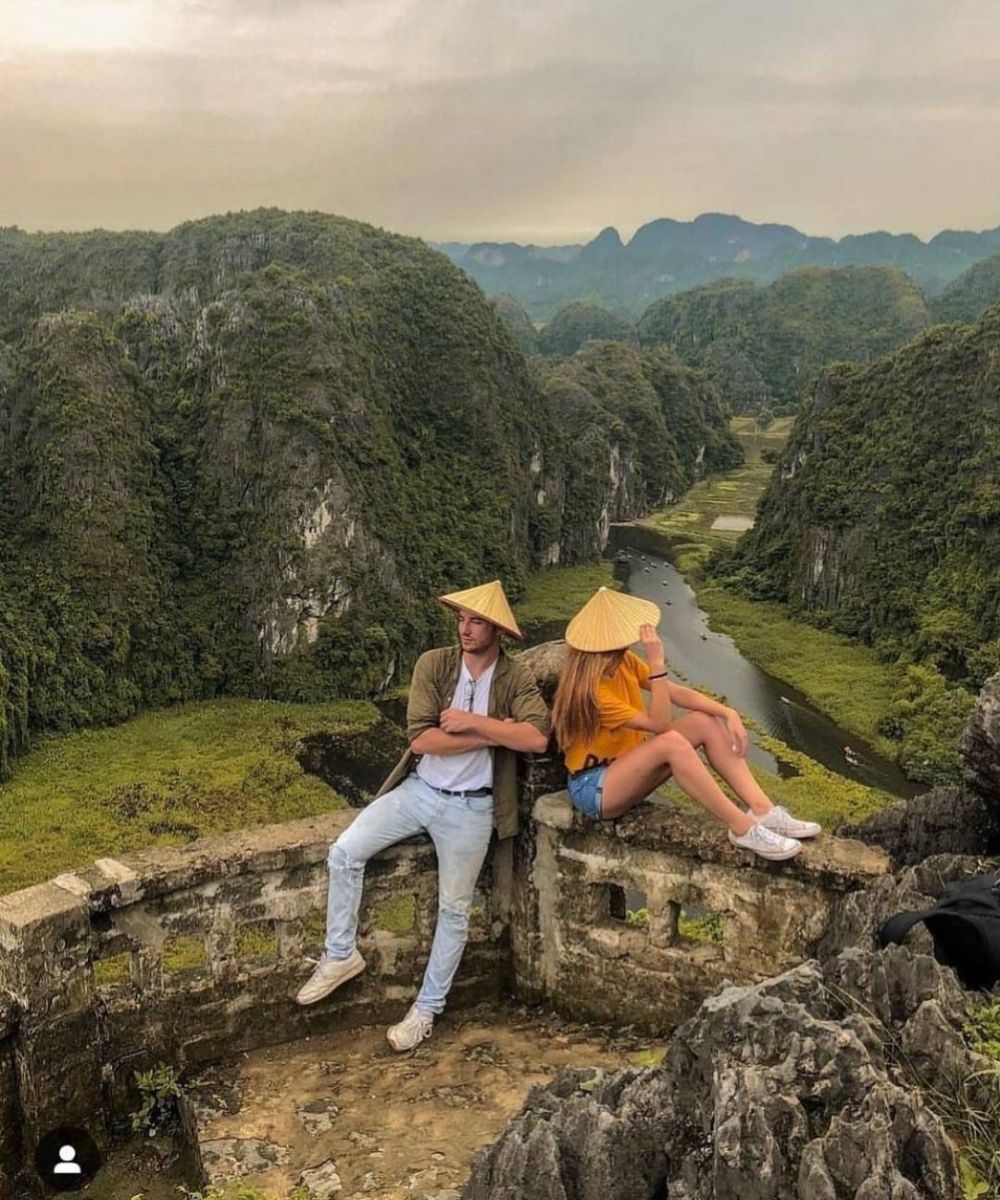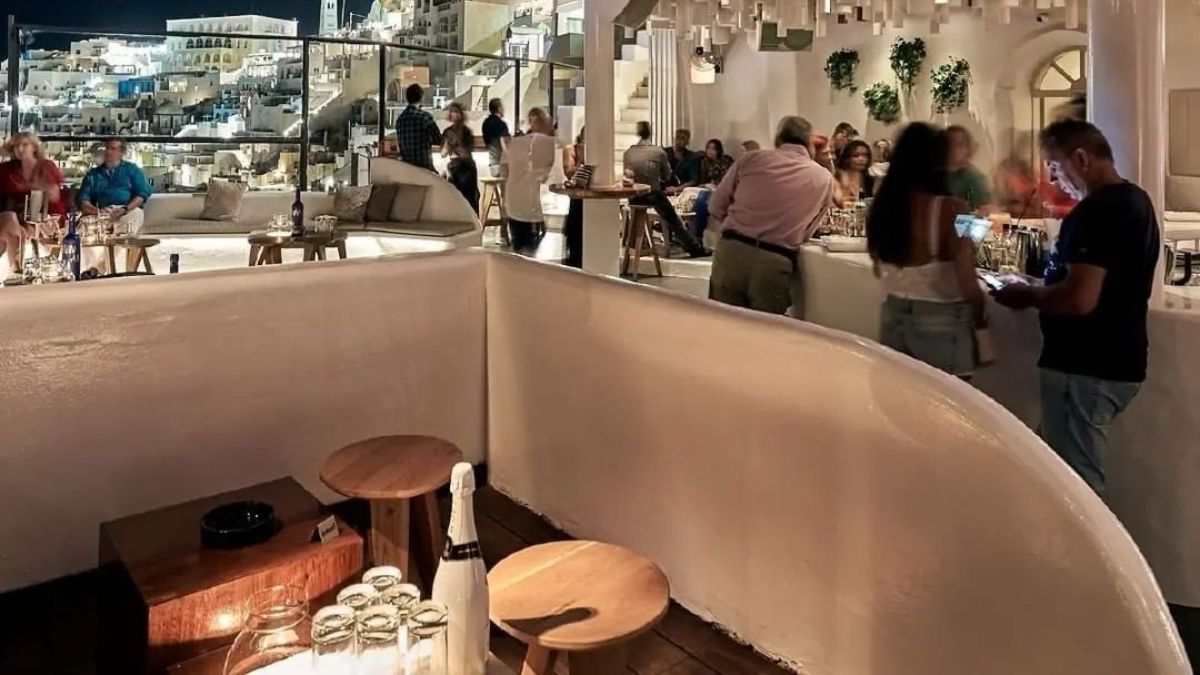Vietnam is a Southeast Asian country on the eastern coast of the Indochina peninsula, with China to its north and Laos and Cambodia to its west. Vietnam’s culture has been shaped by Chinese and French colonialism. The influence of these two cultures is still evident in Vietnam today, from the traditional dress and cuisine to the architecture and religion. Happy trips to Vietnam.
Trips to Vietnam are a chance to experience a unique culture that is a blend of East and West.
One of the best ways to learn about a new culture is to travel there and experience it firsthand. Vietnam is a country with a rich history and fascinating culture, and there’s no better way to immerse yourself in it than by taking a trip. From the bustling city of Hanoi to the stunning Ha Long Bay, there’s so much to see and do in Vietnam.
Here are just a few of the highlights: Hanoi: The capital city of Hanoi is a great place to start your trip. Explore the Old Quarter, where you can see traditional architecture and shop for souvenirs.
Be sure to try some of the local cuisines, too – pho (noodle soup) is a must-try!
Ha Long Bay: This UNESCO World Heritage Site is definitely worth a visit. Take a cruise around the bay and enjoy the breathtaking scenery. You might even spot some rare limestone formations that dot the landscape.
Hue: Hue was once the imperial capital of Vietnam, and you can still see vestiges of its regal past in sites like The Citadel. But Hue is also home to beautiful natural scenery, like Thien Mu Pagoda overlooking the Perfume River.
These are just a few of the many amazing places you can experience on trips to Vietnam. So what are you waiting for? Start planning your adventure trips to Vietnam today!
 What are Some of the Best Things to See And Do in Vietnam
What are Some of the Best Things to See And Do in Vietnam
Vietnam is a country with a rich history and culture, and there are plenty of things to see and do throughout the country. Here are some of the best things to see and do on trips to Vietnam:
1. Visit Ho Chi Minh City: Ho Chi Minh City, formerly known as Saigon, is Vietnam’s largest city and one of the most popular tourist destinations in the country. There are plenty of things to see and do in Ho Chi Minh City, from visiting historical landmarks such as the Reunification Palace and War Remnants Museum, to exploring the bustling markets and enjoying the city’s vibrant nightlife.
2. Take a cruise down Halong Bay: Halong Bay is one of Vietnam’s most popular tourist attractions, and it’s easy to see why. The bay is home to over 2,000 islands, many of which are covered in lush vegetation or have limestone cliffs towering above them. A cruise around Halong Bay is a great way to relax and enjoy the stunning scenery.
3. Explore Hanoi: Hanoi is Vietnam’s capital city and has a lot to offer tourists. The Old Quarter is a great place to start exploring, with its narrow streets lined with shops selling everything from traditional Vietnamese crafts to souvenirs. Hanoi also has several museums that are worth visiting, such as the Hoa Lo Prison Museum which tells the story of Vietnamese prisoners during the French colonial era.
4. Visit Hue: Hue was once the imperial capital of Vietnam during the Nguyen Dynasty (1802-1945) and today it is UNESCO World Heritage Site. Hue is well known for its magnificent Citadel – an enormous complex containing palaces, temples, gardens, museums & more!
How Can I Immerse Myself in the Local Culture While I’M There
When traveling to a new country, it can be difficult to immerse yourself in the local culture. Here are a few tips to help you get the most out of your trips to Vietnam experience:
1. Do your research before you go. Learn about the history and culture of the place you’re visiting. This will help you understand and appreciate what you see and do while you’re there.
2. Talk to locals. One of the best ways to learn about a culture is to talk to people who live there. Ask them about their traditions, customs, and what life is like in their community.
3. Try new things. Be open to trying new foods, experiences, and activities. This is a great way to really get a feel for the local culture.
4. Respect local customs and traditions. Showing respect for another culture is an important part of being a guest in that country or region. Be mindful of your actions and words so as not to offend anyone or cultural norms.
What are Some Off-The-Beaten-Path Experiences That I Can Have in Vietnam
Vietnam is a country full of surprises. From the bustling city life of Ho Chi Minh City to the serene beauty of Ha Long Bay, there is something for everyone in Vietnam. However, if you are looking for an off-the-beaten-path experience, here are a few ideas:
1. Trekking in Sapa: Located in the northwest of Vietnam, Sapa is home to some of the most stunning scenery in the country. Trek through rice terraces and bamboo forests, and meet the local hill tribe people who call this region home.
2. Can Tho: Most visitors to Vietnam only make it as far as Ho Chi Minh City or Hanoi, but those who venture further south will be rewarded with experiences like exploring the Mekong Delta town of Can Tho. Take a boat ride through the floating markets, visit local temples and pagodas, and soak up the laid-back atmosphere of this charming Vietnamese town.
3. Nha Trang: Nha Trang is often overlooked by travelers due to its reputation as a beach resort destination popular with Russians and Chinese tourists. However, those who take the time to explore beyond the beaches will find a beautiful coastal city with plenty to see and do. Visit one of the many ancient Cham towers dotting Nha Trang’s landscape, take a cooking class or enjoy some fresh seafood at one of the many restaurants overlooking Nha Trang Bay.
 Need to Know Before Vietnam Trips
Need to Know Before Vietnam Trips
Vietnam is a country located in Southeast Asia. It’s known for its beautiful beaches, rivers, pagodas, and temples. The culture of Vietnam is unique and the food is delicious.
Trips to Vietnam can be a great experience, but there are some things you should know before you go. Here are things to know before trips to Vietnam:
1. Visa requirements – Most visitors to Vietnam need a visa in order to enter the country. You can apply for a visa at your local Vietnamese embassy or consulate. Alternatively, you can get a visa on arrival by applying for an e-visa online or through a travel agency. Be sure to check the requirements and fees for each option before deciding which one is right for you.
2. Vaccinations – There are no mandatory vaccinations required for entry into Vietnam, but it’s always wise to consult with your doctor before traveling to any new destination. They may recommend certain vaccines depending on your health and where you’re going in the country. For example, if you’re planning on spending time in rural areas or jungle trekking, they may suggest getting vaccinated against hepatitis A and typhoid fever.
Weather in Vietnam
The weather in Vietnam varies depending on the time of year and region of the country you’re visiting. In general, Northern Vietnam experiences cooler weather while Southern Vietnam is hot and humid all year round. The best time to visit depends on what kind of activities and attractions you want to see and do during your trip. Spring (March-April) and autumn (September-November) are generally considered the best times to visit as the weather is milder than at other times of the year.
However, this also means that these months are peak tourist season so expect higher prices for accommodation and flights. If you don’t mind braving the heat or cold, off-peak seasons can be a great time to snag deals on travel costs. Winter (December-February) sees decreased tourism numbers due to holidays falling during this period as well as cold weather in many parts of the country. Summer (May-August) brings stifling temperatures throughout most of Vietnam with monsoon rains occurring sporadically which can cause flooding in some areas. Despite these conditions, summertime still sees plenty of tourists eager to enjoy all that beach life has offered.
Unique Experiences in Vietnam
Vietnam is a Southeast Asian country on the South China Sea known for its beaches, rivers, Buddhist pagodas, and bustling cities. Hanoi, the capital, pays homage to the nation’s iconic Communist-era leader, Ho Chi Minh, via a huge marble mausoleum. Ho Chi Minh City (formerly Saigon) has French colonial landmarks, plus Vietnamese War history museums and the Củ Chi Tunnels used by Viet Cong soldiers.
The best time to visit Vietnam is during the dry season which runs from December through April when temperatures are cooler and rainfall is minimal. The peak tourist season falls between February and March when hotel prices will be at their highest. Some unique experiences that can be found in Vietnam are:
A ride on an overnight sleeper train that cuts through jungle-clad mountains and past rural rice fields -A cyclo tour of old Hanoi complete with stops for pho noodle soup and egg coffee -An exploration of the Mekong Delta by boat, where you can see stilted homes, floating markets, and fruit orchards
A cruise down Halong Bay aboard a traditional junk boat amidst karst limestone islands blanketed in lush vegetation
Experience Vietnam
When most people think of Vietnam, the first thing that comes to mind is the Vietnam War. And while it’s true that the war played a large role in shaping the country’s history, there is so much more to Vietnam than just that. Vietnam is a country of beauty and contrast, from its bustling cities to its rural paddies land.
It’s a place where you can experience both traditional Asian culture and French colonial influences. And it’s a country that has something for everyone, whether you’re looking for an adventure or just want to relax on a beach. If you’re thinking about traveling to Vietnam, here are some things you should know:
The best time to visit Vietnam is during the dry season, which runs from October to April. This is when you’ll find the weather at its best, with low humidity and little rainfall. Keep in mind that December and January can be quite cool in the north of the country, so if you don’t like cold weather, plan your trip accordingly.
Vietnamese visa regulations have changed recently, so it’s important to check the latest requirements before you travel. citizens can now apply for a visa online or get one upon arrival at certain airports in Vietnam. However, not all nationalities are eligible for this option, so make sure you do your research in advance.
When it comes to transportation, Vietnam has come a long way in recent years. While buses and trains are still popular options for getting around, an increasing number of visitors are choosing to rent motorbikes or scooters. This gives you much more flexibility when exploring different parts of the country. Just be sure to drive safely and always wear a helmet!
Culture Trip Vietnam
If you’re planning a trip to Vietnam, you may be wondering what the country’s culture is like. After all, Vietnam is a country with a long history and rich culture. Here are some things to know about Vietnamese culture before you visit:
The family is the most important unit in Vietnamese society. Education is highly valued in Vietnamese culture. Confucianism influences many aspects of Vietnamese life, including filial piety (respect for one’s elders), the importance of education, and obedience to authority figures.
Buddhism is also widely practiced in Vietnam and has had a significant impact on the country’s culture.
Unique Vietnam
Vietnam is a Southeast Asian country on the eastern coast of the Indochina peninsula. Vietnam has more than ninety million inhabitants and an area of 331,210 square kilometers. The official language is Vietnamese and the currency is the dong.
With a tropical climate, Vietnam’s weather patterns are characterized by high humidity and heavy rains from May to September. The Socialist Republic of Vietnam was established in 1976, after the end of the Vietnam War. Since then, the country has undergone rapid economic and social change, with average annual GDP growth of 7% between 2001 and 2010.
Despite these achievements, however, poverty remains widespread in rural areas and income inequality is a significant problem. Vietnam’s culture has been shaped by its long history as well as its geographical position. Influenced by Chinese culture, Confucianism became an important ideology in Vietnam from the second century BCE onwards.
Buddhism also arrived in Vietnam from China during this period and had a significant impact on Vietnamese society. In more recent history, French colonial rule left a lasting mark on Vietnamese culture, particularly in terms of architecture and cuisine.
 Famous Things in Vietnam
Famous Things in Vietnam
The Vietnamese empire eventually fell to French colonialism in the 19th century. In 1976, the North and South reunited as the Socialist Republic of Vietnam.
Today, Vietnam is a rapidly developing country with a growing economy. Tourism is an important part of the Vietnamese economy; attractions include natural beauty (e.g., beaches and mountains), historical sites (e.g., ancient temples and ruins), and cultural experiences (e.g., traditional music and dance). Some famous things in Vietnam include:
Ha Long Bay: This UNESCO World Heritage Site features thousands of limestone islands and karst formations jutting out of the clear emerald waters of the Gulf of Tonkin. Visitors can take boat tours through Ha Long Bay or stay overnight at one of the many floating hotels available.
The Old Quarter: This historic area of Hanoi features narrow streets lined with shops selling everything from souvenirs to traditional medicines.
The Old Quarter is also home to numerous temples and pagodas, including Bach Ma Temple which dates back to 1070 AD!
Vietnam Hidden Gems
Vietnam is a Southeast Asian country with many hidden gems. From the bustling city of Ho Chi Minh to the rural villages, there is much to see and do in Vietnam. Here are some of the hidden gems in Vietnam that you may not know about:
Ba Be National Park: This national park is located in the north of Vietnam and is home to many different species of plants and animals. There are also three large lakes within the park which make for beautiful scenery.
Cuc Phuong National Park: This national park is located in the central part of Vietnam and is home to many different species of plants and animals. The park also has a museum that contains information about the history and culture of Vietnam.
Phong Nha-Ke Bang National Park: This national park is located in the central part of Vietnam and is home to many different caves, including some of the largest caves in the world. The park also has a river that runs through it which makes for beautiful scenery.
Conclusion
Vietnam is a Southeast Asian country with a long, rich history and diverse culture. From its cuisine to its art and music, Vietnam has much to offer visitors. Trips to Vietnam can be a life-changing experience, and there are many ways to immerse yourself in the culture.
One of the best ways to experience Vietnamese culture is through its food. The cuisine is incredibly diverse, with influences from China, France, and other neighboring countries. There are endless options for delicious food in Vietnam, so you’re sure to find something you love.
Another great way to experience Vietnamese culture is through its art and music. The country has a rich tradition of both visual and performing arts. You can see traditional Vietnamese dance performances, visit museums and galleries, or even take part in a painting or calligraphy class.
And of course, no trip to Vietnam would be complete without hearing some traditional Vietnamese music. If you want to truly immerse yourself in Vietnamese culture, consider staying with a local family. This will give you an up-close look at daily life in Vietnam and allow you to learn about the culture firsthand from people who know it best.




